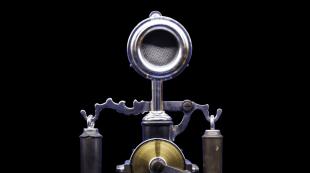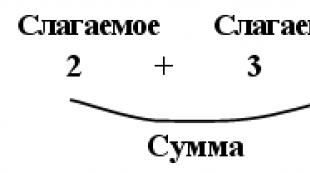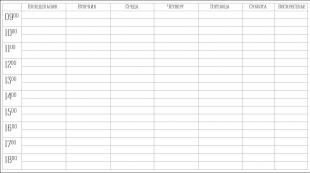Reproduction phases in a liquid nutrient medium. Growth and reproduction of bacteria. Reproduction phases. Pigments are divided into
Intensive processes of anabolism and catabolism in the cell lead to rapid cell growth.
Bacterial growth is an orderly increase in the number and size of all cell components, provided that all the necessary chemical elements, which leads to an increase in its mass. Nutrient substrates must contain these elements in a metabolically available form. Cell growth is not unlimited. After reaching a critical size, the cell undergoes division or reproduction.
Most bacteria divide by cross-sectional binary fission or cytokinesis. In most gram-positive bacteria, division occurs by synthesis of a transverse septum that runs from the periphery to the center. The cells of most gram-negative bacteria divide by constriction. The division process repeats at approximately equal intervals of time (from several minutes to several days), which is an individual genetic characteristic of a microbial species. As a result of reproduction, the number of cells in the population increases sharply.
Reproduction or reproduction in bacteria is the division of the supercoiled DNA of the nucleoid into two daughter strands, each of which is further completed with a complementary filament and simultaneously the formation of two daughter cells occurs (semi-conservative method).
Reproduction is characterized by generation time(the time interval for which the number of cells doubles) and such a concept as concentration of bacteria(number of cells in 1 ml).
When bacteria are introduced into a nutrient medium, they grow and multiply until the content of any of the necessary components of the medium reaches a minimum, after which growth and reproduction cease. If during all this time you do not add nutrients and do not remove the end products of metabolism, then we get static bacterial culture. A static (periodic) culture of bacteria behaves like a multicellular organism, with genetic growth restriction. If you build a graph with time on the abscissa and the number of cells on the ordinate, we get a curve describing the dependence of the number of cells formed on the reproduction time, which is called growth curve.
Bacteria growth curve in a nutrient medium. On this curve, several phases can be distinguished, replacing each other in a certain sequence (Fig. 11):
1. Initial - lag phase(eng. lag- lag behind). Covers the time between the inoculation of bacteria and the start of reproduction. Its duration is on average 2-5 hours and depends on the composition of the nutrient medium, on the age of the sown culture. During the lag phase, bacterial cells adapt to new cultivation conditions, and inducible enzymes are synthesized.
2. Exponential (logarithmic) phase. It is characterized by a constant maximum rate of cell division, a phase of geometric growth with a sharp increase in the population of microorganisms (2 in step n). Reproduction rate depends on the type of bacteria and the nutrient medium. The cell doubling time is called generation time, which varies from the type of bacterial culture: in bacteria of the genus Pseudomonas it is equal to 14 minutes, and at Mycobacterium 18-24 hours. The size of the cells and the protein content in them during the exponential phase remain constant. The bacterial culture in this phase consists of standard cells.
Rice. 11. Phases of bacterial reproduction
3. Stationary phase(phase of equilibrium of reproduction and death of microbial cells). It occurs when the number of cells stops increasing. Since the growth rate depends on the concentration of nutrients, then with a decrease in the content of the latter in the nutrient medium, the growth rate also decreases. A decrease in the growth rate also occurs due to the high density of bacterial cells, a decrease in the partial pressure of oxygen, and the accumulation of toxic metabolic products. The duration of the stationary phase is several hours and depends on the type of bacteria and the characteristics of their cultivation.
4. Phase of withering away or death - a decrease in the population size due to a decrease and lack of conditions for the reproduction of microorganisms. It occurs due to the accumulation of acidic metabolic products or as a result of autolysis under the influence of its own enzymes. The duration of this phase ranges from ten hours to several weeks.
This dynamics is typical for batch crops with a gradual depletion of nutrients and the accumulation of metabolites. The constant presence of the bacterial population in the logarithmic growth phase is observed in continuous culture, which is achieved by gradually dosing the intake of nutrients, controlling the density of the bacterial suspension and removing metabolites. This process of growing microorganisms is called flow cultivation (continuous culture). Growth in continuous culture makes it possible to obtain large masses of bacteria during flow-through cultivation in special devices (chemostats and turbidistats) and is used in the production of vaccines, as well as in biotechnology to obtain various biologically active substances produced by microorganisms.
The vital activity of bacteria is characterized by the growth- the formation of structural and functional components of the cell and an increase in the bacterial cell itself, as well as reproduction- self-reproduction, leading to an increase in the number of bacterial cells in the population.
Bacteria multiply by binary dividing in half, less often by budding. Actinomycetes, like fungi, can multiply by spores. Actinomycetes, being branching bacteria, multiply by fragmentation of filamentous cells. Gram-positive bacteria divide by ingrowing synthesized division partitions into the cell, and gram-negative bacteria divide by constriction, as a result of the formation of dumbbell-shaped figures, from which two identical cells are formed.
Cell division is preceded by replication of a bacterial chromosome in a semi-conservative manner (a double-stranded DNA strand opens and each strand is completed with a complementary strand), leading to a doubling of the DNA molecules of the bacterial nucleus - the nucleoid.
DNA replication occurs in three stages: initiation, elongation, or chain growth, and termination.
Reproduction of bacteria in a liquid nutrient medium. Bacteria inoculated in a certain, unchanging volume of the nutrient medium, multiplying, consume nutrients, which further leads to depletion of the nutrient medium and the cessation of bacterial growth. Cultivating bacteria in such a system is called batch culture, and culture is called batch culture. If the cultivation conditions are maintained by continuous supply of fresh nutrient medium and the outflow of the same volume of culture liquid, then such cultivation is called continuous, and the culture is called continuous.
When bacteria are grown on a liquid nutrient medium, a bottom, diffuse, or superficial (in the form of a film) culture growth is observed. The growth of a batch culture of bacteria grown on a liquid nutrient medium is subdivided into several phases, or periods:
1. lag phase;
2. phase of logarithmic growth;
3. phase of stationary growth, or maximum concentration
bacteria;
4. phase of death of bacteria.
These phases can be depicted graphically in the form of segments of the bacterial growth curve, reflecting the dependence of the logarithm of the number of living cells on the time of their cultivation.
Lag phase- the period between the sowing of bacteria and the beginning of reproduction. The duration of the lag phase is on average 4-5 hours. At the same time, bacteria increase in size and prepare for division; the amount of nucleic acids, protein and other components increases.
Logarithmic (exponential) growth phase is a period of intensive division of bacteria. Its duration is about 5-6 hours. Under optimal growth conditions, bacteria can divide every 20-40 minutes. During this phase, bacteria are most vulnerable, which is explained by the high sensitivity of the metabolic components of an intensively growing cell to inhibitors of protein synthesis, nucleic acids and etc.
Then comes the phase of stationary growth., at which the number of viable cells remains unchanged, making up the maximum level (M-concentration). Its duration is expressed in hours and varies depending on the type of bacteria, their characteristics and cultivation.
The death phase ends the bacterial growth process characterized by the death of bacteria under conditions of depletion of sources of the nutrient medium and the accumulation of products of bacterial metabolism in it. Its duration ranges from 10 hours to several weeks. The intensity of growth and reproduction of bacteria depends on many factors, including the optimal composition of the nutrient medium, redox potential, pH, temperature, etc.
Reproduction of bacteria on a dense nutrient medium. Bacteria growing on solid nutrient media form isolated round-shaped colonies with smooth or uneven edges (S- and R-shapes), of varying consistency and color, depending on the pigment of the bacteria.
Water-soluble pigments diffuse into the culture medium and color it. Another group of pigments is insoluble in water, but soluble in organic solvents. And finally, there are pigments that are not soluble in water or in organic compounds.
The most common among microorganisms are pigments such as carotenes, xanthophylls and melanins. Melanins are insoluble black, brown or red pigments synthesized from phenolic compounds. Melanins, along with catalase, superoxide cismutase and peroxidases, protect microorganisms from the effects of toxic oxygen peroxide radicals. Many pigments have antimicrobial, antibiotic-like effects.
Growing bacteria is fun and rewarding. For some experimenters, such experiments make it possible to make sure that there is life on literally every millimeter of an unsterilized surface; other, more practical naturalists pursue exclusively utilitarian goals (the use of bacteria in food preparation, in the manufacture of fertilizers, and even in construction has a certain popularity). To understand how to establish the process of cultivating microorganisms in specially created conditions, one should have an idea of the growth phases of bacteria and those factors that affect the life of a bacterial population growing on nutrient media controlled by humans.
Before settling (inoculating) bacteria on a nutrient-rich surface, the breeder should have sufficient information about what future bacterial cells can breathe and what they can eat.
Breath
Almost all bacteria that can be grown at home are either aerobes (breathe exclusively oxygen) or facultative anaerobes (depending on the living conditions, they can change the chemistry of the respiratory processes). Cultures of obligate (strict) anaerobic bacteria, which die in the presence of oxygen, can only be grown in an oxygen-free environment.

Nutrition
The composition of any medium in which it is necessary to achieve the reproduction of the bacterial population must include substances containing carbon and nitrogen. Essential requirements for the necessary nutrition are put forward by the autotrophy or heterotrophy of the future population. Autotrophs feeding on inorganic substances require a sufficient presence of carbon dioxide and calcium carbonate (bicarbonate). Heterotrophs, decomposing organic matter, get their own food from organic acids, alcohols, carbohydrates and aromatic compounds. The nitrogen demand of the bacterial population of heterotrophs is satisfied by organic compounds with amino groups - nitrogen-containing organic substances.
The very inoculation of bacteria on nutrient media is carried out either by droplets (together with a liquid substance), or by mechanical movement of a living culture from the habitat to the surface with prepared food. You can run a cotton swab over a tabletop and brush dry dust particles onto the nutrient solution.
Growth, reproduction and death
The growth phases of the bacterial population have a pattern verified by microbiologists. On the growth graph, four main phases can be distinguished, which clearly demonstrate the main stages of the development of bacteria on nutrient media.

First stage
The first phase of population growth is called the lag phase. It begins from the moment the culture of bacteria is colonized on a nutrient solution and ends with the moment of adaptation of the resettled population to new conditions. During the lag phase, cells adapt to new living conditions. In this phase, there is a delay in the growth of the culture and the absence of reproduction (division) of bacteria.
The duration of the lag phase depends on the age of the culture (the older it is, the longer the adaptation takes) and on how different the sources of nutrients for the bacterial cell are in the initial environment and in the environment where the population is cultivated. The greater this difference, the longer the adaptation process.
Second phase
The next phase in the growth of a living culture is an exponential or exponential phase. Having adapted to the conditions of respiration and nutrition in the new environment, cells begin to actively divide. In this phase, they have the highest reactivity and are distinguished by the highest viability. During the exponential growth phase, cells synthesize the greatest amount of RNA - a protein that is responsible for creating new DNA from the information that is encrypted in the mother's DNA.
Third stage
With the achievement of the maximum number of viable cells that the existing nutrient solution is capable of "feeding", the next stage of growth of a living culture is recorded - stagnation, or stationary phase. Lack of sufficient nutrition slows down all the chemistry that occurs inside the cell, the rate of reproduction decreases, and RNA is practically not synthesized.

During this phase of population growth, microbiologists observe such a phenomenon in the bacterial community as apoptosis. Apoptosis is the altruistic behavior of a part of bacteria that stop maintaining vital reactions in themselves (in fact, commit suicide), thereby going to feed the surviving part of the bacterial population. Apoptosis makes it possible for the population to multiply during the stagnation phase.
Final stage
Completion of the life cycle of a bacterial cell depends rather on internal factors... Being in conditions of limited nutrition, after the phases of an active period of growth, reproduction and stagnation, cells accumulate in their habitat the products of their own vital activity: organic acids, autolysis, antibiotics produced as a result of bacterial cell metabolism.
Home conditions
At home, colonies of bacteria are easiest to grow either in a liquid medium (broth is suitable for this), or on vegetable gelatin - agar. Of the two possible methods of cultivating populations (stationary and continuous) at home, only stationary (for example, in Petri dishes) can be established.
Continuous assumes a constant supply of nutrient solution and pumping out of a living culture. This process can be supported only with the availability of special laboratory equipment, with the help of which the required amount of the required substrate and the level of live culture sampling from the existing bacterial incubator are monitored.

I work as a veterinary doctor. I am fond of ballroom dancing, sports and yoga. I prioritize personal development and mastering spiritual practices. Favorite topics: veterinary medicine, biology, construction, renovation, travel. Taboo: jurisprudence, politics, IT technologies and computer games.
Growth- this is a coordinated increase in all components of the cell, the result of growth is reproduction.
Reproduction of bacteria- an increase in the number of cells in the population.
In the process of growth, the bacterial cell increases 2-3 times, it intensively stains and accumulates RNA. In favorable conditions, growth ends with reproduction. In bacteria, reproduction occurs by dividing in half - binary fission is the main method of reproduction.
Growth curve characterizes the growth and reproduction of bacteria under certain environmental conditions. The growth curve is obtained from the study of the periodic culture.
Periodic culture- This is a population of m / s that develops in a limited volume of the environment without the supply of nutrients.
Phase 1 - initial - bacteria grow, but do not multiply
Phase 2 - the phase of logarithmic growth - bacteria multiply intensively, their number increases in a logarithmic progression.
3 phase - stationary - reproduction - equal to mortality
Phase 4 - withering away - metabolic products accumulate, nutrients are depleted and bacteria die.
External factors can have:
bacteriostatic action - suppress the reproduction and growth of bacteria
bactericidal effect - cause the death of bacteria
Reproduction of bacteria.
It starts with replication (duplication) of the genome, and then division occurs.
Bacteria have vegetative replication - information is transmitted from the parent cell to the daughter one.
In bacteria, replication is self-regulating - the genome has genes responsible for replication.
Replication is semi-conservative - daughter cells receive evenly distributed genetic material (one strand of maternal DNA, the other newly synthesized).
Replication starts from a certain point from which DNA unwinds, a replication fork is formed, and an SSB protein is synthesized, which prevents the strands from re-twisting. The process is carried out by DNA polymerase, which is able to attach complementary nucleotides to the free 3 "end.
The synthesis of complementary sites is triggered by primer dressing. This RNA region is complementary to the template DNA and the primer has a free 3 "end. Primer priming starts DNA synthesis, Okazaki fragments are built on the template, which are stitched into a single strand by DNA ligases. In the bacterial cell, 2 identical DNA strands are formed, which are stretched along the poles cells and after replication bacteria division starts.
Division begins with elongation of the cytoplasmic membrane, an intercellular septum is formed along the equator, along which the bacterium divides in binary and 2 identical daughter cells are formed.
Growth and reproduction rates of bacteria:
Increase in cell size
Bacterial concentration - number of cells in 1 ml
Density of bacteria - mass of bacteria in mg per ml
Generation time - the time it takes for the number of cells to double.
22. Cultivation and methods of isolation of pure culture of aerobes and anaerobes.
Cultivation m / o- This is the production of a large number of bacteria on a nutrient medium.
Cultivation purpose: The study of microbiological properties, For the diagnosis of infections and For obtaining a biological product from bacteria or obtained with the help of bacteria.
Bacteria cultivation conditions:
The presence of a complete nutrient medium.
Optimal t (≈37 0 C)
Cultivation atmosphere (with or without O 2).
Culturing time - visible growth in 18-48 hours, or for some 3-4 weeks (tbc)
Illumination of the nutrient medium for photosynthetic (grow only in the presence of light).
Reproduction
n Bacteria multiply binary fission, less often by budding, actinomycetes - by spores and fragmentation.
n Gram-negative bacteria are divided by constriction.
n Gram-positive bacteria divide by ingrowing synthesized fission septa into the cell
After being introduced into the environment, bacteria adapt to its conditions and multiply relatively slowly (lag phase). Then comes the exponential growth phase (exponential phase). Further, the environment is depleted, toxic metabolic products accumulate in it, which is manifested by a decrease in the rate of reproduction and a cessation of an increase in the number of cells (stationary phase).
Thus, growth in periodic culture obeys laws that are valid not only for unicellular, but also for multicellular organisms. Subsequently, the bacterial culture may die or be significantly reduced (die-off phase). Spore-forming species pass into the stage of sporulation; in spore-forming species, the formation of anabiotic forms is possible (see below). In some cases, the growth acceleration phase (the beginning of the exponential phase) and the growth deceleration phase (transition to the stationary phase) are additionally distinguished.
Lag phase bacterial growth corresponds to the period of physiological adaptation, including the induction of enzymes, synthesis and assembly of ribosomes. The duration of the phase depends mainly on the age of the inoculum (inoculum) of the bacteria and the previous culture conditions. If the inoculum is taken from an old culture (in the stationary growth phase), the bacteria need time to adapt to the new conditions. If the sources of energy and carbon in the new environment differ from those available in the previous culture, then adaptation to new conditions may require the synthesis of new enzymes, which were not previously necessary.
Exponential phase bacterial growth (logarithmic) is characterized by the maximum rate cell division... For a specific bacterial species under specific growth conditions, the generation time (that is, the time required to double the number of bacteria) is constant throughout the entire logarithmic phase, but is variable for different species and strains, and also depends on the composition of the medium and cultivation conditions. The generation time on the optimal medium can be short (in E. coli, 20 min) or long (in Mycobacterium tuberculosais, 6 h). In this phase, the maximum accumulation of bacterial metabolites (for example, toxins, bacteriocins) occurs in the environment.
Stationary phase growth of bacteria. During this period, the availability of essential nutrients becomes the limiting factor. A balance is established between cell growth and division and the process of cell death. Spore-forming bacteria (for example, of the genera Bacillus and Clostridium) are able to enter the sporulation phase, which is activated when bacteria are in conditions of limited nutrition. At a certain moment, the ratio of dying, newly formed and dormant cells becomes stable; such a state is known as the maximum stationary phase. The biomass of bacteria in the stationary phase is referred to as "yield" or "biomass yield" (the difference between the maximum and initial biomass); or “economic coefficient”, if the biomass growth is related to the unit of the growth-limiting substrate.
Withering phase(decay, lysis) includes a period of logarithmic death, passing into a period of decreasing the rate of bacteria death. The reasons for the death of bacteria in normal nutrient media are not fully understood. Cases when acids accumulate in the medium (during the growth of Escherichia, Lactobacillus) are understandable. Sometimes bacteria are destroyed by their own enzymes (autolysis). The death rate varies widely depending on the habitat and the characteristics of the microorganism (for example, enterobacteriaceae die off slowly, and bacilli die off quickly).
Submerged cultivation method bacteria are used in the industrial cultivation of bacterial biomass, for which they use special boilers-reactors. They are equipped with systems for maintaining temperature, supplying various nutrients to the broth, mixing biomass and constant supply of oxygen. The creation of aerobic conditions throughout the entire thickness of the medium promotes the flow of energy processes along the aerobic pathway, which contributes to the maximum utilization of the energy potential of glucose and, consequently, the maximum biomass yield.
Flowing media method(industrial method of cultivation) allows you to constantly maintain a bacterial culture in an exponential growth phase, which is achieved by the constant introduction of nutrients and the removal of a certain number of bacterial cells. The stay of bacteria in the exponential stage of growth ensures the maximum yield of various biologically active substances (vitamins, antibiotics, etc.).









